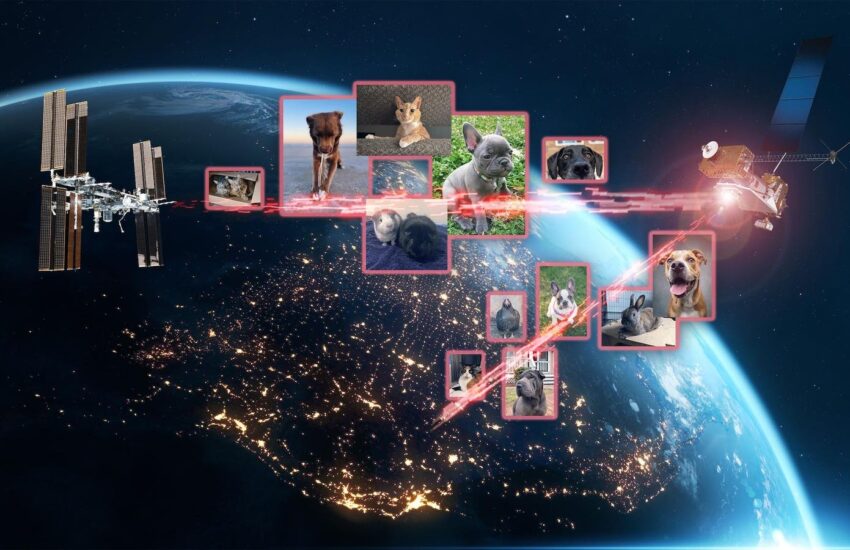A collage of the pet photos sent over laser links from Earth to the space station.
Over 500 images of everything from cats and dogs to cows and snakes owned by NASA employees have been transmitted back and forth between Earth and the International Space Station to test a new data link.
It’s part of a mission by the space agency to create high-bandwidth communications between Earth and its spacecraft. The new two-way, end-to-end Laser Relay System was able to send pictures and videos of pets at a rate of 1.2 gigabits per second, reports NASA. That’s faster than most home internet speeds.
Optical To Infrared
It wasn’t a direct link. NASA sent the data from a computer at a mission operations center in Las Cruces, New Mexico, first to optical ground stations in California and Hawaii, which turned the data into infrared light signals—lasers. They were transmitted to NASA’s LCRD (Laser Communications Relay Demonstration) satellite about 22,000 miles above Earth in geosynchronous orbit, then to an instrument on the outside of the ISS.
Images included cats, dogs, birds, chickens, cows, snakes, pigs and more.
Successful Experiment
The successful experiment follows a one-off transmission of an image of a cat from Earth to NASA’s Psyche spacecraft about 19 million miles (31 million kilometers) into deep space. This Deep Space Optical Communications demonstration saw a 15-second video that took 101 seconds to reach Earth at a maximum bit rate of 267 megabits per second.
Increasing bandwidth across space is seen as essential because spacecraft and satellites are collecting more data than ever.
It’s hoped that HD photos and even live video can one day be transmitted over billions of miles of deep space—bringing the prospect of watching in near-real-time as NASA spacecraft land on Mars.
Streaming Over Starlink
In recent months, SpaceX has been using its own Starlink communications system to transmit images from its Starship tests back to Earth.
On June 6, during the “Flight 4” test of Starship, high-definition camera views showing its reentry into Earth’s atmosphere were streamed online thanks to its ability to connect to SpaceX’s Starlink satellite internet network.
Starlink has over 6,000 satellites in low-Earth orbit and around 3 million subscribers as of May 2024.
Follow me on Twitter/X and Instagram.
Pick up my books Stargazing in 2024, A Stargazing Program For Beginners and When Is The Next Eclipse?
Wishing you clear skies and wide eyes.

